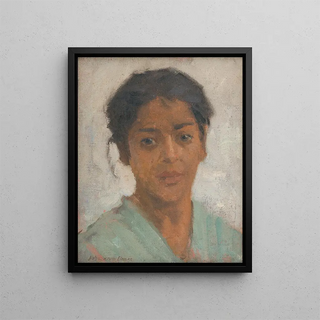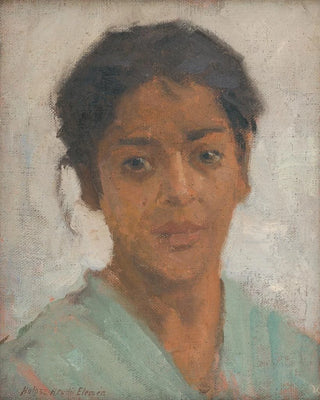Painting Gitan - Elemér Halász-Hradil | Art print


View from behind

Frame (optional)
Gitan Art print - Elemér Halász-Hradil – Captivating introduction
The Gitan art print - Elemér Halász-Hradil is a piece that transcends the simple frame of painting to offer an immersion into a universe where Gitane culture blends with the artistic sensitivity of the early 20th century. This work, imbued with poetry and melancholy, invites the viewer to explore the nuances of identity and wandering. Through vibrant colors and dynamic shapes, the artist manages to capture the very essence of Gitans' life, a world that is both rich and complex, often little known. Contemplating this piece, one feels a call to discovery, a desire to learn more about these nomadic communities that have so much to offer in terms of culture and history.
Style and uniqueness of the work
Halász-Hradil's work stands out for its unique style, which combines realism with an almost impressionist approach. The characters depicted, often in motion, seem to dance under the artist's brush, creating a captivating visual dynamic. The warm and bright colors, typical of the art of that era, evoke joy and passion, while also revealing a certain melancholy. Every detail, from traditional clothing to facial expressions, is carefully crafted to tell a story. Light plays an essential role in this composition, illuminating the scenes of life and enhancing the emotion it conveys. Thus, Halász-Hradil succeeds in creating an atmosphere that is both intimate and universal, touching the hearts of those who take the time to immerse themselves in it.
The artist and his influence
Elemér Halász-Hradil, a Hungarian-born artist, managed to establish himself on the European art scene thanks to his undeniable talent and innovative approach. Influenced by the artistic movements of his time, he incorporated elements of folklore into his works, paying homage to the richness of popular traditions. His interest in Gitane culture is no coincidence; it reflects a desire to explore themes of diversity and wandering, often absent from artistic discourses of his era. Halász-Hradil was also a major figure in promoting the arts as a means of expression and intercultural understanding.

Matte finish

View from behind

Frame (optional)
Gitan Art print - Elemér Halász-Hradil – Captivating introduction
The Gitan art print - Elemér Halász-Hradil is a piece that transcends the simple frame of painting to offer an immersion into a universe where Gitane culture blends with the artistic sensitivity of the early 20th century. This work, imbued with poetry and melancholy, invites the viewer to explore the nuances of identity and wandering. Through vibrant colors and dynamic shapes, the artist manages to capture the very essence of Gitans' life, a world that is both rich and complex, often little known. Contemplating this piece, one feels a call to discovery, a desire to learn more about these nomadic communities that have so much to offer in terms of culture and history.
Style and uniqueness of the work
Halász-Hradil's work stands out for its unique style, which combines realism with an almost impressionist approach. The characters depicted, often in motion, seem to dance under the artist's brush, creating a captivating visual dynamic. The warm and bright colors, typical of the art of that era, evoke joy and passion, while also revealing a certain melancholy. Every detail, from traditional clothing to facial expressions, is carefully crafted to tell a story. Light plays an essential role in this composition, illuminating the scenes of life and enhancing the emotion it conveys. Thus, Halász-Hradil succeeds in creating an atmosphere that is both intimate and universal, touching the hearts of those who take the time to immerse themselves in it.
The artist and his influence
Elemér Halász-Hradil, a Hungarian-born artist, managed to establish himself on the European art scene thanks to his undeniable talent and innovative approach. Influenced by the artistic movements of his time, he incorporated elements of folklore into his works, paying homage to the richness of popular traditions. His interest in Gitane culture is no coincidence; it reflects a desire to explore themes of diversity and wandering, often absent from artistic discourses of his era. Halász-Hradil was also a major figure in promoting the arts as a means of expression and intercultural understanding.
12,34 €






